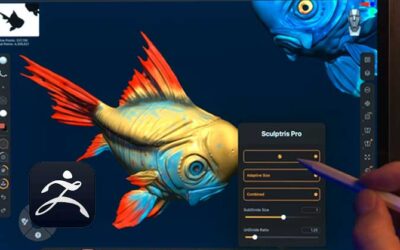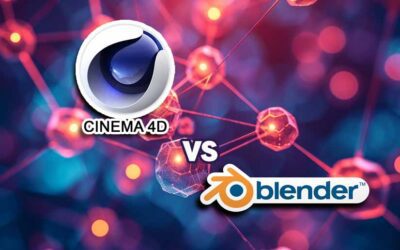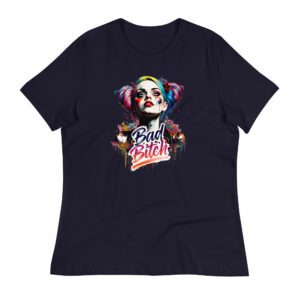Table of Contents
Summary
Criteria for Selection
Selection Process Overview
Key Features
1. Screen Size and Resolution
2. Panel Type
3. Color Accuracy
4. Refresh Rate
5. Connectivity Options
User Reviews and Real-World Performance
Summary
Monitors for content creators are specialized displays designed to meet the unique
needs of professionals in graphic design, video editing, and other creative fields.
These monitors prioritize essential features such as high resolution, exceptional
color accuracy, ergonomic designs, and versatile connectivity options, making them
crucial tools for enhancing productivity and ensuring precision in visual tasks.[1][2]
As content creation continues to evolve, the demand for monitors that can accurately
reproduce colors and details has grown, leading to a significant market for high-per-
formance displays that cater specifically to this audience.
The selection of the top five monitors for content creators involves comprehensive
evaluations of performance, user reviews, and critical specifications. Key considera-
tions include screen size, panel type, refresh rates, and connectivity options, which
collectively impact the overall user experience and the quality of output.[3][4][5] For
instance, monitors like the BenQ PD3200U and Asus ProArt PA279Q stand out for
their high-resolution displays and color accuracy, which are paramount for tasks such
as photo editing and graphic design.
Notably, the monitor market also faces scrutiny regarding the reliability of reviews and
the transparency of testing processes. A significant percentage of monitor reviews
have been criticized for lack of thorough testing and ambiguous methodologies, lead-
ing to potential misinformation for consumers seeking to make informed purchasing
decisions.[8] This highlights the importance of credible sources and standardized
review processes in guiding content creators toward the best monitor options for their
specific needs.
In summary, the landscape of monitors for content creators is characterized by
rapid technological advancements and a diverse array of options, tailored to various
creative requirements. The ongoing dialogue about user experiences and review
integrity underscores the necessity for thoughtful consideration when selecting the
ideal monitor for professional use, ultimately enhancing workflow efficiency and
output quality.
Criteria for Selection
When selecting the best monitors for content creators, a systematic approach is
essential to ensure that the chosen displays meet the specific needs of graphic
designers, video editors, and other professionals in the creative industry.
Selection Process Overview
The selection process is designed to evaluate monitors based on comprehensive
research and practical testing to identify those that align with the unique requirements
of content creators. Key elements of this process include in-depth research and
hands-on assessments to provide accurate recommendations.
Key Features
1. Screen Size and Resolution
Choosing the right screen size is critical for maximizing productivity and ensuring a comfortable working experience. For graphic design and video editing, a minimum screen size of 24 inches is recommended, with 27 inches being ideal for enhanced detail visibility. Moreover, a resolution of at least 4K (UHD) is preferred, as it allows for a sharper image and facilitates work at nearly a 1:1 scale, significantly reducing the need for zooming and scrolling.
2. Panel Type
The type of panel used in a monitor greatly affects image quality and viewing experience. In-Plane Switching (IPS) panels are favored for their superior color accuracy and wide viewing angles, maintaining image consistency up to 178 degrees. This is particularly important for content creators who rely on precise color representation in their work.
3. Color Accuracy
Color accuracy is a paramount consideration for content creators, especially in video editing and graphic design. Monitors should exhibit high RGB coverage, such as Adobe RGB or DCI-P3, to ensure that colors are displayed accurately and consistently. This is essential for achieving professional results in various projects.
4. Refresh Rate
A monitor with a refresh rate of 60 Hz or higher is recommended to prevent flickering and tearing during image manipulation or video playback. For tasks involving 3D design or video editing, higher refresh rates can enhance the viewing experience and performance during real-time previews.
5. Connectivity Options
Modern content creation requires versatile connectivity options to accommodate various devices and peripherals. Monitors should include multiple ports, such as HDMI, DisplayPort, and Thunderbolt/USB-C, allowing for seamless integration with existing setups.
User Reviews and Real-World Performance
In addition to technical specifications, user reviews are invaluable for assessing a monitor’s long-term performance and practical usability. Feedback from other content creators can reveal insights into color grading capabilities, durability, and any recurring issues that may not be apparent from specifications alone[5].By carefully considering these criteria, content creators can make informed decisions when selecting monitors that best meet their professional needs, ultimately enhancing their workflow and the quality of their output.
Review of the Top Five Monitors
The selection of the best monitors for content creators is based on comprehensive
performance evaluations, user reviews, and specific features tailored for tasks such
as photo and video editing. The following monitors have emerged as the top five
choices due to their exceptional specifications and suitability for creative professionals.
1. BenQ PD3200U

The BenQ PD3200U is a 32-inch 4K monitor that provides an expansive workspace for content creators. It is designed with a focus on color accuracy and detail, making it ideal for tasks like photo editing and graphic design. The monitor features an IPS panel, ensuring wide viewing angles and consistent color performance. Additionally, it includes multiple connectivity options such as HDMI and DisplayPort, enhancing its versatility for various setups.
2. Asus ProArt PA279Q

The Asus ProArt PA279Q is a 27-inch monitor that boasts 4K resolution and exceptional color accuracy, making it a favorite among photographers and graphic designers. This monitor features a factory-calibrated IPS panel and supports a wide color gamut, ensuring that colors are rendered accurately. Its ergonomic design
and extensive connectivity options, including USB-C, add to its appeal for creative professionals who require reliable performance and flexibility.
3. ViewSonic VP2785-4K

The ViewSonic VP2785-4K is tailored for video editing tasks that demand high fidelity.
With its 27-inch 4K display, the monitor offers a sleek frameless design that is aesthetically pleasing and functional, allowing for seamless multi-monitor setups. This model excels in color-critical precision and is factory calibrated for accuracy, making it an excellent choice for filmmakers and editors alike.
4. Dell UltraSharp U2718Q

The Dell UltraSharp U2718Q features a 27-inch 4K IPS display known for its excellent color reproduction and wide viewing angles. This monitor is designed to meet the demands of content creators, with its impressive specifications making it suitable for detailed editing work. Its ergonomic stand and extensive connectivity options enhance usability, allowing users to customize their workspace to suit their needs.
5. ViewSonic VP3881

The ViewSonic VP3881 stands out as an ultra-wide 38-inch monitor that provides ample screen real estate for multitasking and immersive editing experiences. Its curved design not only enhances visual comfort but also promotes productivity by allowing users to see more of their work without the need for multiple monitors. The
monitor offers 4K resolution and is equipped with features that ensure accurate color reproduction, making it an ideal choice for serious content creators.
Each of these monitors excels in specific areas, making them suitable for different types of creative work, from photo editing to video production. Choosing the right monitor ultimately depends on individual preferences and specific professional requirements.
User Experiences and Criticisms
User experiences and criticisms play a vital role in evaluating the effectiveness of monitors designed for content creators. Understanding how users interact with their monitors can help potential buyers make informed decisions and guide manufacturers in improving their products.
Importance of User Behavior Analysis
An analysis of user behavior is essential for identifying how the target audience interacts with monitors, which in turn can highlight areas for improvement or optimization. Key metrics such as bounce rate, time on site, and pages per session provide insights into user engagement and satisfaction levels.[10] By understanding these metrics, users can determine which monitor features resonate most with creators and which aspects may require revisions or enhancements.
Common User Feedback
Users often report varying experiences based on the monitor’s specifications and performance. For instance, high refresh rates are critical for competitive gaming, while casual users may prioritize resolution over refresh rate for creative work.
Reviews often indicate that while a 60 Hz refresh rate might suffice for casual activities, content creators and gamers seeking precision will benefit from higher refresh rates such as 144 Hz or more.
Moreover, the quality of the monitor’s display and its capabilities for color accuracy are significant points of concern among graphic designers and video editors. Users frequently emphasize the importance of high-resolution images and vibrant color reproduction in their reviews, indicating a preference for monitors that meet high standards for visual fidelity.
Criticisms of Monitor Reviews
Despite the wealth of user reviews available, not all sources are reliable. Studies have shown that 77% of computer monitor reviewers do not adequately test their products, leading to misleading assessments of performance and quality. Consequently, only 23% of publications are deemed trustworthy, and users are encouraged to seek out credible sources when evaluating potential monitors for creative work.
Furthermore, criticisms often arise regarding the lack of transparency in review processes. Users have expressed frustration over ambiguous testing standards and the absence of detailed methodologies in many reviews. This concern emphasizes the need for a more standardized approach to monitor reviews, which would enhance consumer confidence in their purchasing decisions.
User Suggestions for Improvement
Based on user experiences, several suggestions for improving monitor performance have emerged. Enhancing content quality to meet user expectations and utilizing engaging visuals are common recommendations. Additionally, addressing user interface issues such as navigation and providing clear calls to action can significantly enhance the overall user experience.
By continuously monitoring user feedback and addressing criticisms, manufacturers can ensure their products align with the needs of content creators, ultimately leading to better user satisfaction and engagement.
Overview of Monitors for Content Creators
The following table provides a comparison of five highly-rated monitors suited for content creators, evaluating essential features such as resolution, color accuracy, ergonomics, and connectivity options. This comparative analysis assists in identifying the most appropriate monitor based on specific needs for graphic design, photo editing, and video editing.
Notes:
-
Pricing: These are approximate prices and can vary based on location, retailer, and availability.
-
HDR: Only the ViewSonic VP2785-4K has HDR 10 certification among these models.
-
Color Gamut: Coverage percentages can vary slightly based on different calibrations and standards.
References
[1]: The Best Monitors For Video Editing To Get Amazing Color Accuracy – Forbes
[2]: The best monitors for photo editing – Creative Bloq
[3]: Best Monitors for Graphic Designers in 2024 (Dec) – JUST™ Creative
[4]: The 5 Best Monitors for Graphic Design: 2024 Guide – LayoutMag UK
[5]: Best Monitors for Video Editing 2024 – SmartPicked
[6]: Best Monitors for Content Creation: Top Picks for 2021
[7]: The Best Monitors of 2023 we’ve reviewed – Gadgets Middle East
[8]: Best Monitor For Video Editing In 2024: 15 Top Monitors For Video Editing
[9]: 10 Picks: Best Monitor for Digital Artists and Digital Art in 2024
[10]: The best monitors for photo editing in 2023 – Popular Photography
[11]: Measuring the Success of Your Content Strategy: A Comprehensive Guide
[12]: Is It Worth Your Money? – Blue Sky Graphics
[13]: The best graphic design monitors of 2024: Expert tested
[14]: Computer Monitor Testing Methodology & Analysis – Gadget Review
[15]: 7 Key Metrics to Track for Effective Content Creation – FinModelsLab























0 Comments